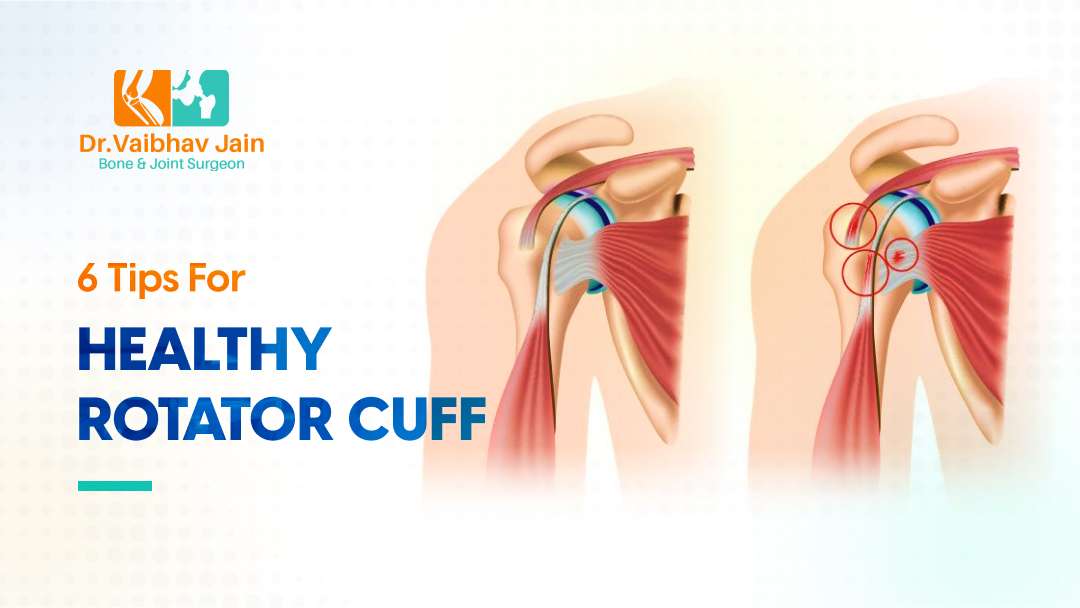Rotator cuff injuries are quite common and affect millions of individuals every year. A rotator cuff injury can be extremely painful and inhibit movement; it also needs to be taken care of properly. Some tips for rotator cuff injuries
Maintaining a healthy rotator cuff is essential for keeping your shoulder joint in good working condition and preventing the risk of injury. Unfortunately, many people fail to take the necessary steps to keep their rotator cuff healthy and often end up dealing with the painful and debilitating effects of an injured rotator cuff.
If you want to avoid this type of injury, here are 6 tips and treatment for keeping your rotator cuff healthy and strong:
1. Maintain Good Posture
Having bad posture can cause wear-and-tear on your rotator cuff muscles and can cause them to become strained or injured. This can lead to pain, difficulty with activities, and limited range of motion. Even something as simple as regularly maintaining good posture can help to avoid this.
Good posture is essential for maintaining a healthy rotator cuff. Your rotator cuff is a group of muscles and tendons around your shoulder joint that allows you to perform a wide range of arm and shoulder movements. When you don’t practice proper posture, the load on your shoulder joint is unevenly distributed, which can lead to painful rotator cuff injuries.
Maintaining good posture is essential for keeping your rotator cuff healthy. With a few simple tips and a bit of effort, you can learn to maintain good posture and reduce the risk of rotator cuff injuries. Remember, if you are experiencing any shoulder pain, it’s important to seek medical attention.
2. Strengthen Your Rotator Cuff Muscles
One of the most common and effective exercises for strengthening the rotator cuff muscles is external and internal rotations. External rotations involve rotating your arm outwards towards the side; and internal rotations involve rotating your arm inwards towards the body. To do either exercise, stand with your feet shoulder-width apart and hold a weight in one hand. Then rotate your arm outwards or inwards until you feel a stretch in your shoulder.
Another great exercise for strengthening the rotator cuff muscles is shoulder presses. Shoulder presses involve pushing weights up and away from your chest as you keep your shoulder blades together and your chest open. To do this exercise, stand with your feet hip-width apart and hold a weight in each hand. Then, press the weights up until your arms are outstretched and fully extended.
3. Avoid Activities That Put Excessive Strain On Your Rotator Cuff
It is important to be aware of the amount of weight or force you are putting on your rotator cuff when doing overhead activities. If you are lifting something too heavy or doing a motion too quickly, this can put excessive strain on your rotator cuff muscles. It is important to adjust the weight or force as needed to prevent overuse injuries.
Be mindful of the activities you’re participating in that may put excessive strain on your rotator cuff. Taking breaks, stretching, and avoiding activities that cause pain can help keep your rotator cuff healthy and prevent injury. If you experience any pain or discomfort, make sure to speak with a doctor or physical therapist to assess your condition.
4. Stretch Regularly
At least once a week, you should incorporate stretching into your routine to improve your shoulder joint and rotator cuff flexibility. Stretching your shoulder joint can help keep the muscles around your shoulder joint flexible and mobile, while also increasing your range of motion. Stretching can help to prevent injuries to your shoulder joint, rotator cuff and other muscles around your shoulder joint.
Stretching your rotator cuff muscles is an important part of maintaining good shoulder health. Aim to do a few stretches every day, and you’ll soon start to feel the benefits. Not only will you help to prevent injuries, but you’ll also improve your flexibility and range of motion, and enjoy better overall shoulder health.
5. Use Proper Form When Lifting
When lifting heavy objects, it is important to keep your elbows close to your body and lift with your legs rather than your back. This helps to keep the strain off of your rotator cuff muscles. Additionally, it is important to avoid twisting or turning while lifting, as this can cause the rotator cuff muscles to become overworked. If you do feel a strain in your shoulder area, it is important to stop the activity and rest for a few days.
6. Use Good Technique When Participating In Sports
When participating in sports, it’s important to use good technique in order to reduce the risk of rotator cuff injuries. For example, when throwing a ball, be sure to follow through with your throw and use good arm mechanics to help prevent overuse injuries. This means keeping your elbow near your body, instead of away from it, and keeping your hand, wrist, and shoulder in alignment so you don’t strain your rotator cuff.
Another technique to help protect the rotator cuff is to use a proper warm up before any physical activity. Warming up helps to increase blood flow to the muscles and joints, making them more flexible and less prone to injury. It’s also important to stretch after physical activity to help reduce the risk of injury.
It’s important to listen to your body and be aware of any aches or pains. If something doesn’t feel right, it’s best to take a break to let your body rest and recover. Doing so will help to prevent further injury and allow you to return to your sport feeling healthy and strong.
| Tip Number | Tip Description |
|---|---|
| 1 | Exercise Often: Do exercises to make your shoulder muscles stronger and more flexible. |
| 2 | Sit Up Straight: Keep your back and shoulders straight to avoid hurting your shoulder. |
| 3 | Don’t Overdo It: Try not to do the same shoulder movements over and over again. |
| 4 | Lift Carefully: Use good technique when lifting things to keep your shoulder safe. |
| 5 | Warm Up First: Stretch your shoulder muscles before starting any activities. |
| 6 | Take Breaks: Give your shoulder time to rest after using it a lot. |
By following these tips and treatments, you can help ensure a healthy and successful recovery from a rotator cuff injury.
Conclusion
A healthy rotator cuff is essential for keeping your shoulder joint in good working condition and injury-free. To achieve this, be sure to include exercises that target your rotator cuff muscles into your routine, as well as stretching and strengthening exercises. Additionally, be sure to take breaks when necessary and take care of any existing rotator cuff injuries promptly.
Dr. Vaibhav Jain is an experienced shoulder specialist who has a proven track record of helping patients with rotator cuff injuries and other shoulder conditions. He offers personalized care and treatment options to ensure that patients receive the best possible care for a healthy rotator cuff. If you are suffering from shoulder pain or have a rotator cuff injury, consulting Dr. Vaibhav Jain is the best choice for you for a full recovery.





